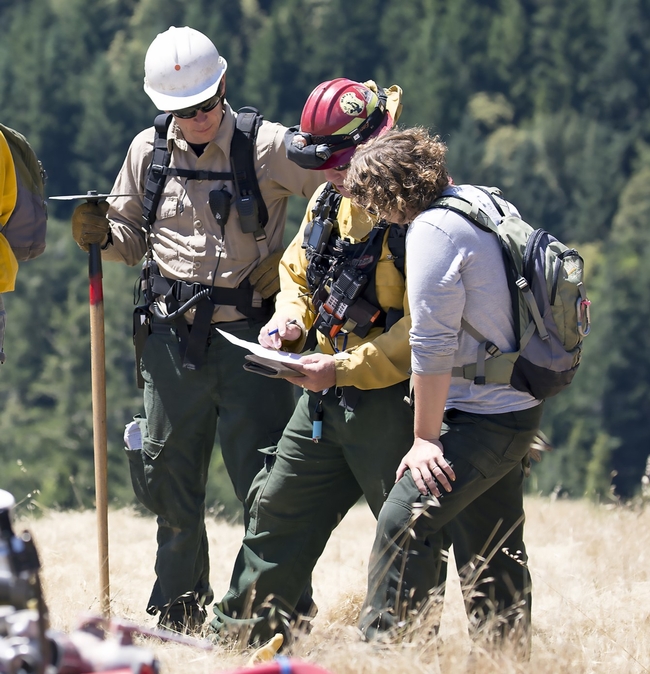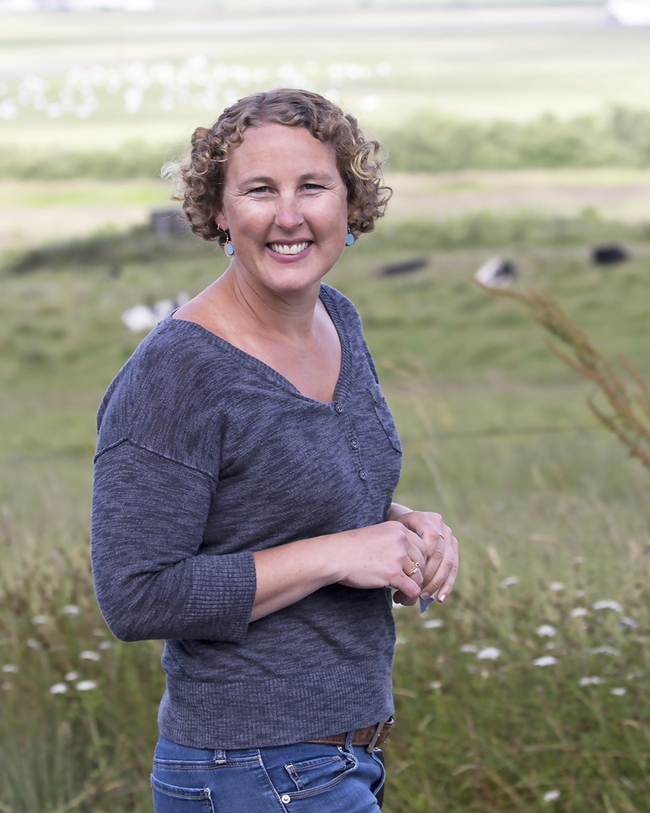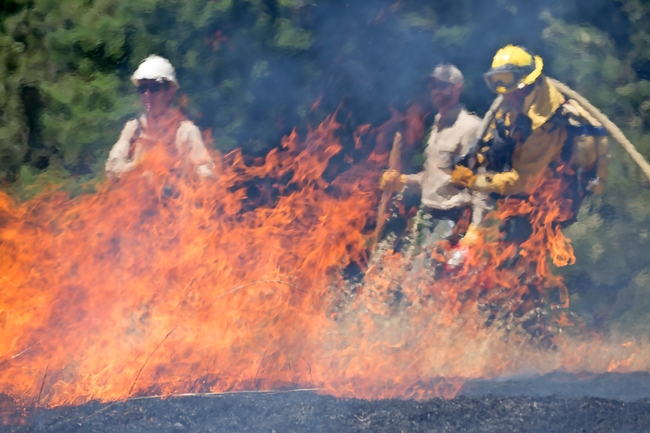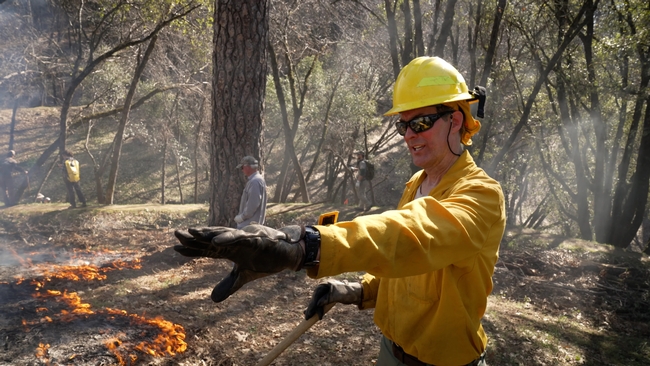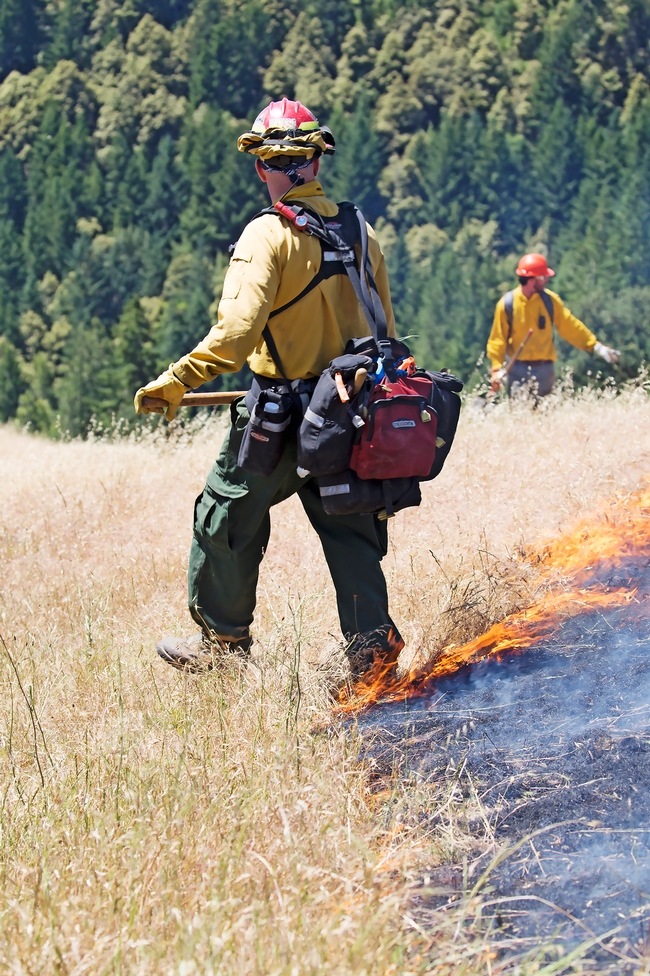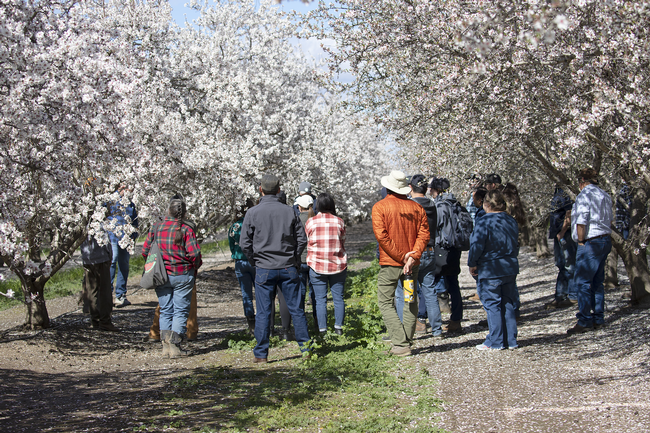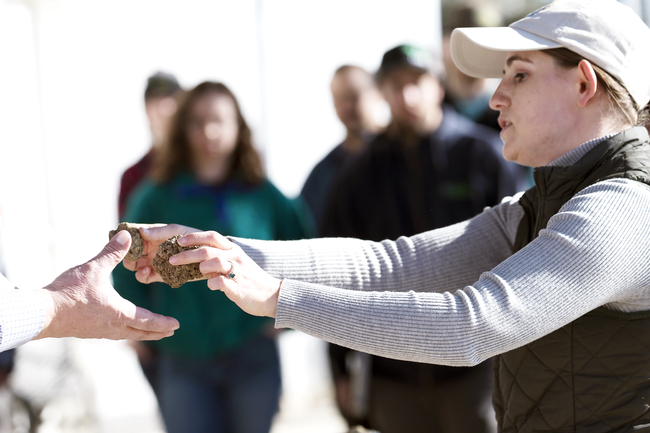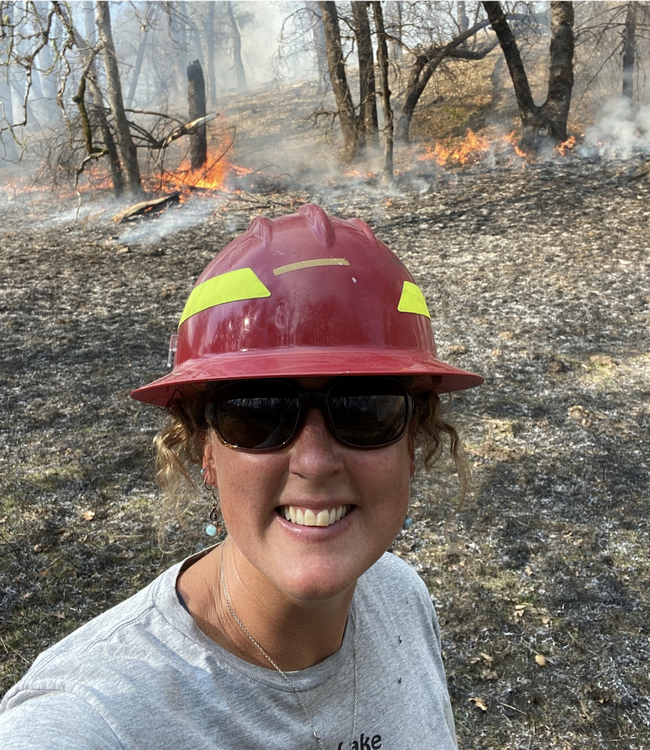
Posts Tagged: network
More than 800 wildland fire professionals gather for international conference in Monterey
UC ANR among sponsors of 10th International Fire Ecology and Management Congress
Scientists, land managers, educators and students from a variety of organizations worldwide will gather from Dec. 4-8 in Monterey, California for the 10th International Fire Ecology and Management Congress. The conference is hosted by the Association for Fire Ecology in cooperation with the California Fire Science Consortium.
Major sponsors include University of California Agriculture and Natural Resources, with the Esselen Tribe of Monterey County as the host tribe. There are more than 25 additional sponsors and exhibitors representing federal and state agencies, universities, nonprofits, tribal organizations and companies.
“As we know from recent fire events across the globe, wildland fire issues are complex and there is an urgent need to work together in new and creative ways to address wildfire-related challenges,” said Lenya Quinn-Davidson, Fire Network director at UC ANR. “We need to identify opportunities to promote fire-resilient communities and environments.”
This event will include workshops, field trips and three full days of presentations, discussion groups and networking opportunities around the theme, “Igniting Connections: Celebrating Our Fire Family Across Generations, Cultures and Disciplines.”
On Monday, Dec. 4, the Fire Congress will kick off with 10 workshops and trainings, offering opportunities for participants to build and apply new skills in modeling, collaborative planning, risk management and more. From Tuesday morning to Thursday afternoon, the Fire Congress program is filled with innovative plenary sessions, more than 500 oral and poster presentations, and opportunities for sharing information through discussion groups and meetings.
For the first time, the conference will also feature an Indigenous Culture and Art Showcase, taking place on Tuesday, Dec. 5. The entire event concludes on Friday, Dec. 8 with field trips to explore nearby natural areas to see how the concepts discussed at the Fire Congress are being applied in California.
Participants will be encouraged to share and explore proactive solutions that apply Western science and Indigenous knowledge to meet desired management and societal outcomes.
More conference information at http://afefirecongress.org.
MEDIA CONTACTS
Lenya Quinn-Davidson (University of California Agriculture and Natural Resources): lquinndavidson@ucanr.edu, 707-272-0637
Morgan Varner (Tall Timbers Research Station): mvarner@talltimbers.org, 707-845-1659
Jeffrey Kane (Cal Poly Humboldt): Jeffrey.Kane@humboldt.edu, 928-637-4128
Reforms needed to expand prescribed burns
Study highlights 4 strategies to overcome barriers to prescribed fire in the West
Prescribed fire, which mimics natural fire regimes, can help improve forest health and reduce the likelihood of catastrophic wildfire. But this management tool is underused in the fire-prone U.S. West and Baja California, Mexico, due to several barriers.
A paper from the University of California, Davis, pinpoints those obstacles and suggests four key strategies that policymakers and land managers can take to get more “good fire” on the ground in North America's fire-adapted ecosystems. The paper also provides examples of how people are surmounting some of these obstacles.
“Prescribed fire is one of the most important tools we have for restoring natural fire regimes and undoing the effects of a century of fire suppression,” said lead author John Williams, a project scientist with the UC Davis Department of Environmental Science and Policy. “But there are a number top-down barriers at the upper levels of management that keep us from growing the workforce and getting burns done at the scale and extent needed. We point out some of the big ways that agency leaders and policymakers can dismantle those barriers and empower the full range of people capable of doing this work, from burn bosses and citizen-prescribed burn associations to nonprofits and tribal groups.”
The paper, published in the journal Frontiers in Ecology and the Environment, centers on the North American Mediterranean climate zone, which includes most of California, southwestern Oregon, western Nevada and northern Baja California in Mexico. Lenya Quinn-Davidson, director of UC Agriculture and Natural Resources' Fire Network, is a co-author of the paper.
A natural process
Fire is a natural process that has helped shape this region, but the area has experienced a spike in destructive, high-severity wildfires over the past decade. In fact, three of the five largest wildfires in continental U.S. history occurred in this region in just the past five years. This is due to a combination of climate change and fuel accumulation driven by a century of policies that encouraged fire suppression, curtailed Indigenous cultural burning, and favored harvest of the largest, most fire-tolerant trees, the study notes.
While scientists and resource managers recognize the need for more prescribed fire, its application has not kept pace with the enormity of the challenge. The study said that is because management policies prioritize fire suppression over prevention. There is also a limited fire workforce; regulatory hurdles like permitting, insurance and liability; and few incentives or protections for landowners, tribal members and other people who burn responsibly.
4 key strategies
Researchers identified four key areas where supportive institutional and agency leadership can help expand prescribed fire in the region:
1) Fire culture. After decades of emphasizing wildfire suppression, current fire management culture “does not adequately promote prescribed fire as a management tool,” the study said. Support for prescribed fire along the entire chain of command within agencies is needed to foster a new culture that incentivizes and enables prescribed fire practitioners within and outside of government agencies.
2) Funding. Prescribed fire is considerably more cost-effective than wildfire suppression, which can cost more than $2 billion a year in the U.S., but there is little dedicated funding for prescribed fire projects and lack of flexibility as to when such money can be spent. This impedes fire staffing and limits the kinds of projects that can be done. Year-round, dedicated funding and resources could help increase prescribed fire capacity.
3) Capacity building and cooperation. Connecting agencies with landowners, community members, tribes, prescribed burning associations (PBAs), prescribed fire training exchanges (TREXs) and others can facilitate responsible, effective prescribed fire and cultural burning exchanges. Such groups have limited reach and require investment and support to meet demand.
Inter-organizational agreements can also help local, state and federal agencies share resources and staffing. Formalizing and fully integrating such agreements into fire management plans remains a challenge, the study said. Collaborations that support Indigenous cultural burning are also key.
Partnerships must recognize the unique dimensions of cultural burning, which are inseparable from Indigenous culture. Educating land managers and decision makers about tribal sovereignty and federal American Indian law is critical. Introducing legislation that supports cultural burning can also foster such collaborations.
4) Monitoring and adaptive management. Designated funding and personnel for quantitative monitoring after a prescribed burn can help practitioners better measure success and then apply lessons to future burns.
“All of the barriers identified in the study can be overcome, and they have been at least partially resolved in other parts of the U.S., as well as in other Mediterranean climate regions, such as southwestern Australia,” said co-author Hugh Safford, a research ecologist in the UC Davis Department of Environmental Science and Policy and director of the California Prescribed Fire Monitoring Program. “Fundamental to setting the situation right is developing a culture of safe and regular fire use in California and neighboring states by all landowners and managers, and reducing the officiousness, risk aversion and bureaucracy that hinders access to the tool by the public.”
Additional co-authors include Ashley Grupenhoff and Beth Rose Middleton of UC Davis; Joe Restaino of CAL FIRE; Edward Smith of The Nature Conservancy; Chris Adlam of Oregon State University; and Hiram Rivera-Huerta of Autonomous University of Baja California, Mexico.
This research received financial support from the California Department of Forestry and Fire Protection (CAL FIRE).
This story was originally published on the UC Davis News site.
UC awards Brodt $2M to advance soil health, climate-smart farming practices
Regional farms will demonstrate practices such as cover cropping, reduced tillage, compost and mulch use, hedgerow planting, optimized irrigation systems
To accelerate adoption of climate-smart farming practices, the University of California Office of the President has awarded nearly $2 million to a team of UC Cooperative Extension scientists and community partners working on a network of farm demonstration sites. The project will be led by Sonja Brodt, coordinator for agriculture and environment at the UC Sustainable Agriculture Research & Education Program. This UC Agriculture and Natural Resources project is one of 38 funded with $83.1 million allocated to UC by the State of California for climate action research and innovation.
Scaling up soil health and other climate-smart agricultural practices to sequester carbon, increase water and nutrient use efficiency, and improve the resilience of farms to climate-related threats like drought and floods is a core pillar identified in California's Natural and Working Lands Climate Smart Strategy.
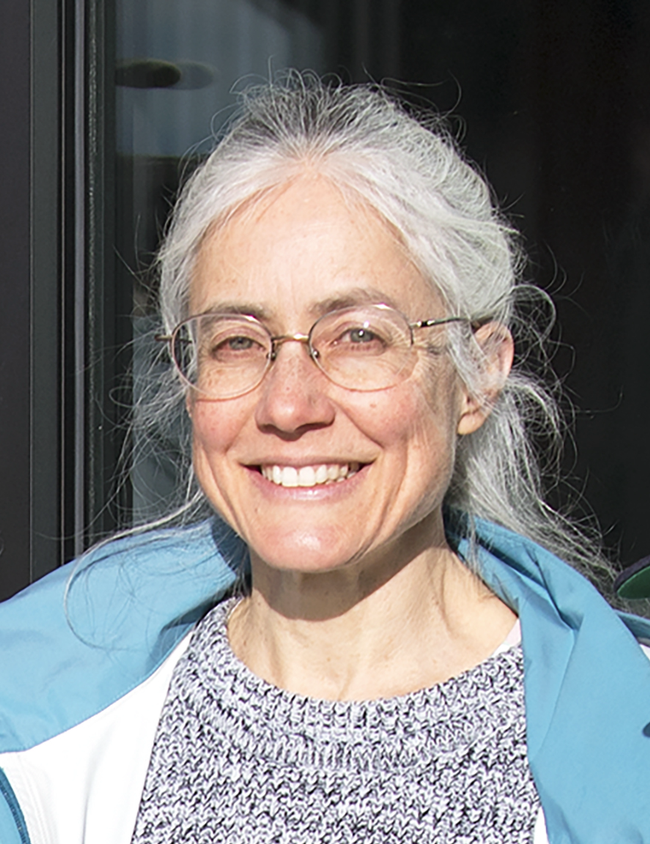
“Our project will strengthen the nascent California Farm Demonstration Network for on-the-ground, regionally specific demonstration of a range of climate-smart practices,” said Brodt. “Regional farms will demonstrate practices such as cover cropping, reduced tillage, compost and mulch use, hedgerow planting, irrigation system optimization and more.”
The $1,999,524 project will pilot a participatory partnership extension model that allows farmers to learn from their peers to reduce adoption risks and adapt knowledge to an ever-changing environment, increasing the likelihood of farmer success and accelerating long-term uptake of complex, place-specific practices.
Building on the capacity of local trusted organizations, project collaborators will be organized in a hub-and-spoke network with three regional Farm Demonstration Hubs (Sacramento Valley, North Coast and Central Coast), a pilot Hmong/Mien Demonstration Hub, and a statewide Organic Demonstration Hub.
Collaborators at each hub will be responsible for identifying and nurturing farm demonstration sites, and conducting demonstration trials and farmer-to-farmer outreach activities. Centralized organization and capacity building will be provided by UC SAREP, UC Organic Agriculture Institute, the California Association of Resource Conservation Districts, the Community Alliance with Family Farmers, and the California Farm Demonstration Network Advisory Panel.
In addition to several UC Cooperative Extension advisors and specialists across the state, partners include the UC Hansen Research and Extension Center and the Rodale Institute California Organic Center, both in Ventura County, and the UC Climate Smart Agriculture Program. Eight Resource Conservation Districts will also be involved in leading Farm Demonstration Hubs.
The project will also conduct soil health assessment activities to inform soil health and resilience monitoring protocols in future research and extension efforts. Since many existing soil health metrics were designed for agroecosystems in the Midwest and Eastern U.S., this project aims to lay the groundwork for research to adapt soil health metrics to the arid and Mediterranean climates of California.
“By utilizing relationships built between demonstration hub managers and demonstration farms across different cropping systems, we will gather quantitative and qualitative soil health data, information about growers' management practices as well as their own perspectives of what they really need to know about their soils in order to better manage for climate resilience and mitigation,” said Brodt.
Ultimately, the project partners aim to establish an enduring on-farm extension and research system that will help thousands of farmers adopt climate-smart practices tailored to their farms.
Other grant-supported projects focus on water access, conservation
The largest of the Climate Action Matching Grants, an $8.2 million investment, supports the development of planning tools to advance sustainable, inclusive and equitable water distribution for California's 39 million people. The project is led by Ted Grantham, a UC Cooperative Extension specialist in the Department of Environmental Science, Policy and Management at UC Berkeley. Kristin Dobbin, UC Cooperative Extension specialist in the Department of Environmental Science, Policy, and Management at UC Berkeley, and Erik Porse, director of the California Institute for Water Resources are collaborating on the project.
Three other projects involving UC ANR researchers received California Climate Action Seed Grants and Matching Grants subawards:
- Development of a hydrogel that can work as a soil amendment to help small-scale vegetable farms conserve water led by UC San Diego associate professor Shengqiang Cai with Ruth Dahlquist-Willard, UC Cooperative Extension small farms advisor and interim director of UC SAREP; Mallika Nocco, UC Cooperative Extension specialist; and Matthew Gilbert, UC Davis professor of whole plant physiology. $297,979
- Development of a tool for predicting climate-water variation led by UC Irvine professor Isabella Velicogna with Tapan Pathak, UC Cooperative Extension specialist. $199,531
- A study of urban stream corridors led by UC Davis professor Gregory Pasternack with Igor Lacan, UC Cooperative Extension environmental horticulture and urban forestry advisor. $33,824
- A study of how California's housing crisis affects the growth of the wildland urban interface (WUI), where the fringes of development reach into natural areas led by UC Santa Cruz professor Miriam Greenberg, with Barb Satink Wolfson, UCCE fire advisor, Devii Rao, UCCE livestock and natural resources advisor, and the Central Coast Prescribed Burn Association.
Updated 8/31/23 to add the wildland urban interface study.
Quinn-Davidson to lead UC ANR Fire Network
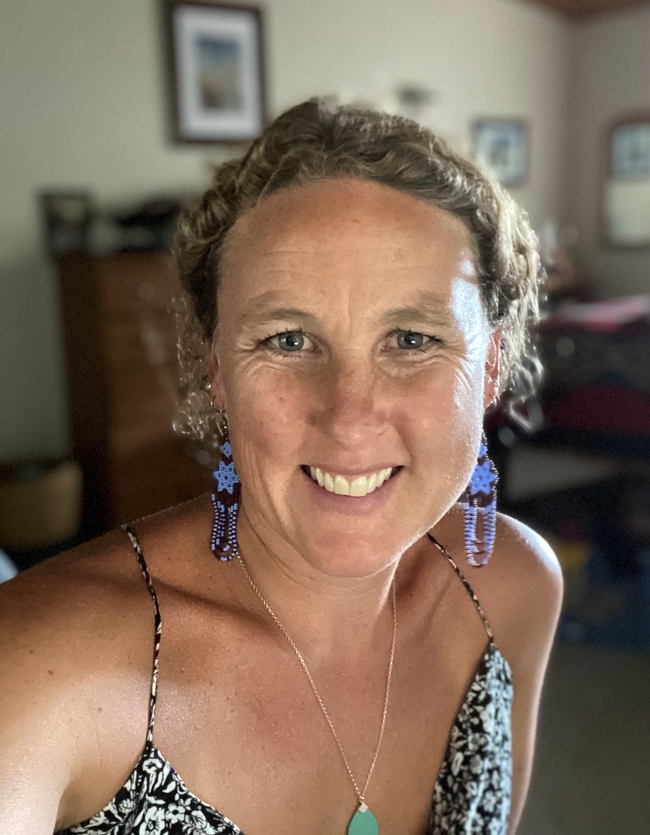
Wildfire has become more frequent and intense in California with climate change. To meet the challenge of wildfire, UC ANR has hired several new UC Cooperative Extension fire advisors and staff to study issues related to wildfire and to assist Californians with their preparations. Quinn-Davidson and the Fire Network will provide critical coordination and connection across geographies and disciplines ranging from forestry to food safety to livestock to water quality.
“Lenya has more than a decade of work in fire science and has carried out her work through partnerships and community engagement,” said Glenda Humiston, UC vice president of agriculture and natural resources. “Her experience and successful track record will enhance how we coordinate our many layers of research and education related to fire prevention, recovery, public policy and workforce development.”
Quinn-Davidson has served as a UC Cooperative Extension fire advisor for the North Coast since 2016. During her three-year term as the Fire Network director, she will continue her research program and continue to build capacity among landowners, tribes and other communities to use prescribed fire throughout the state. Quinn-Davidson also leads the national/international WTREX program, focused on empowering women and other underrepresented people who work in fire.
“I'm honored to take on this new role, and I can't wait to further grow, connect and support our fire efforts within UC ANR,” Quinn-Davidson said.
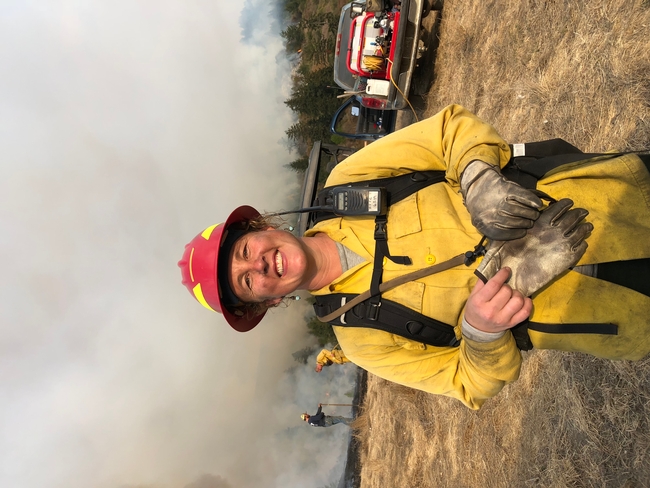
UC ANR's Fire Network will also enhance communication.
“The network will increase the flow of information to improve how we conduct academic research, strengthen local efforts by sharing relevant data and ideas, create and build capacity for different management techniques and tools, and facilitate new research and programming related to diverse facets of fire in California,” said Deanne Meyer, UC ANR interim associate vice president.
Before becoming a UCCE fire advisor, Quinn-Davidson worked on fire projects for five years as a UCCE staff research associate. Since 2009, she has served as director of the Northern California Prescribed Fire Council. Prior to joining UC Cooperative Extension, she was a research assistant in the Wildland Fire Laboratory at California State Polytechnic University, Humboldt and worked on stream restoration for Bioengineering Associates, Inc.
She earned a master's degree in social science, environment & community from Cal Poly Humboldt and a bachelor's degree in conservation and resource studies from UC Berkeley.
Quinn-Davidson, who has published more than 70 peer-reviewed and popular articles, will be based in Humboldt County. Follow her on Twitter @lenyaqd.
Art Shapiro: Monitoring Butterfly Populations in Central California Since 1972
If you missed it, yesterday (March 14) was the annual "National Learn About Butterflies Day." That's the day we're encouraged to "to look for a blur of color as butterflies begin migrating across the country. Each year the celebration brings with it an awareness of the varieties of butterflies and...
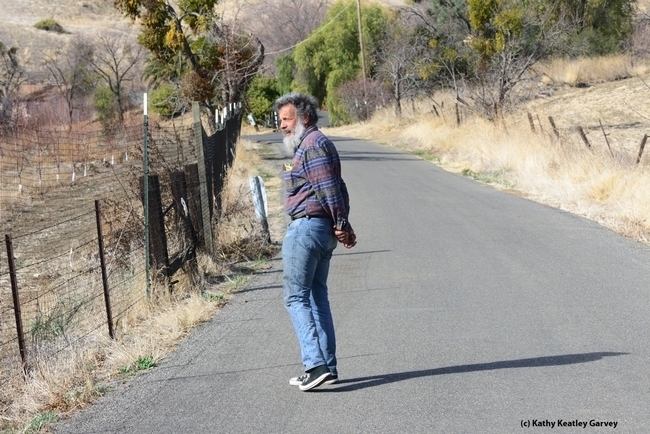
One of Art Shapiro's monitoring sites is Gates Canyon, Vacaville. Here he looks for butterflies in this image taken on Jan. 25, 2014. (Photo by Kathy Keatley Garvey)
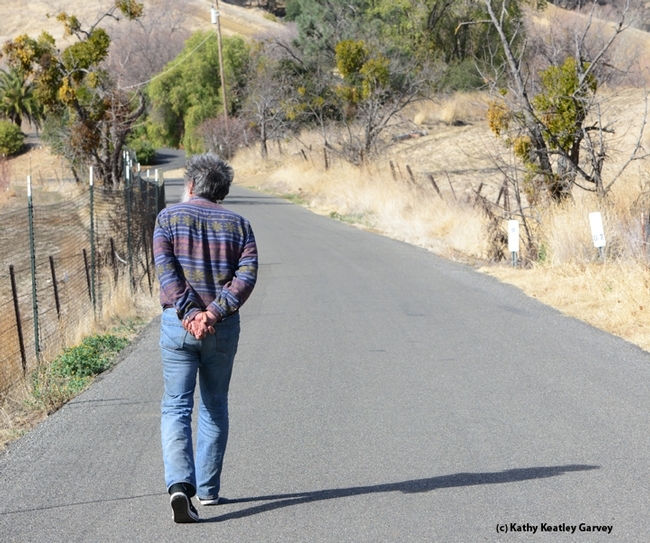
UC Davis distinguished professor Art Shapiro estimates he wears out three or four pairs of a shoes a year. (Photo by Kathy Keatley Garvey)

